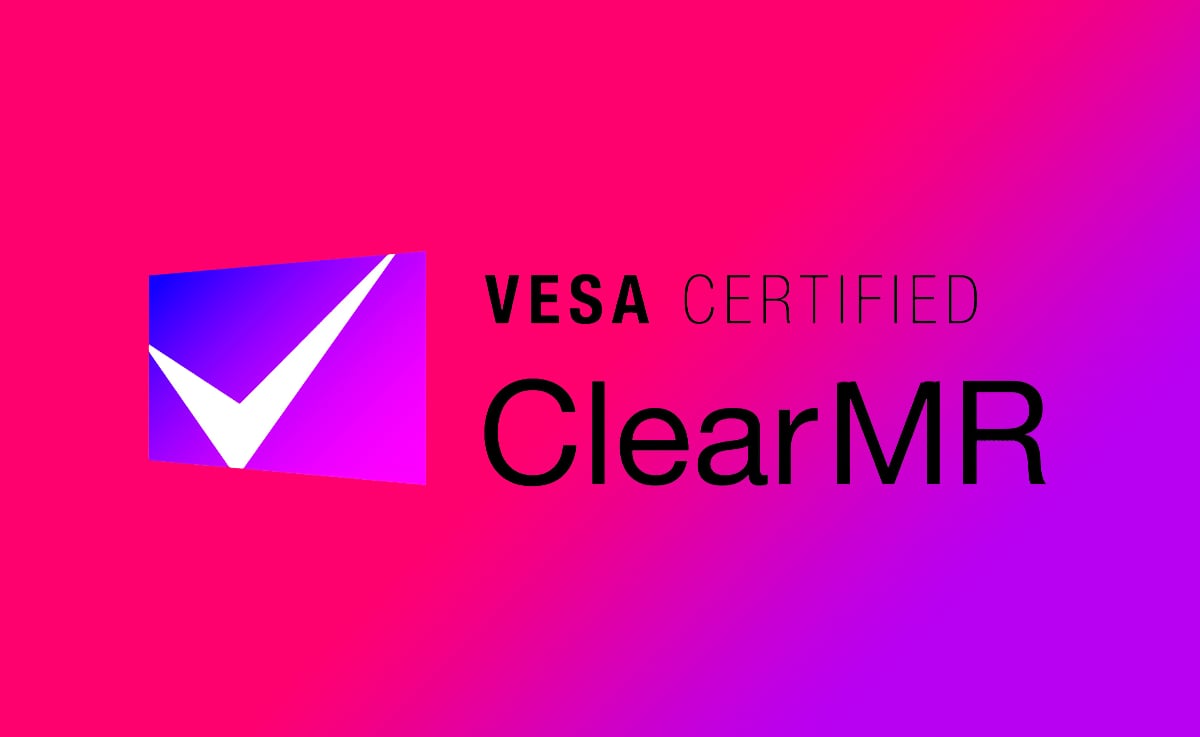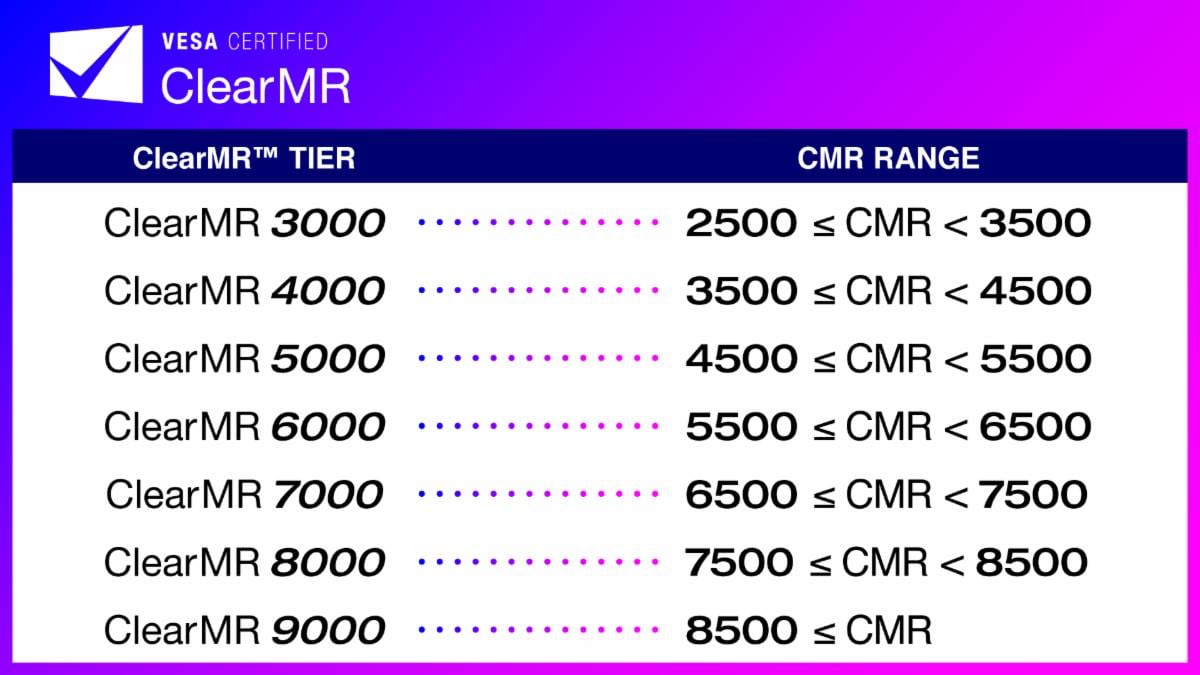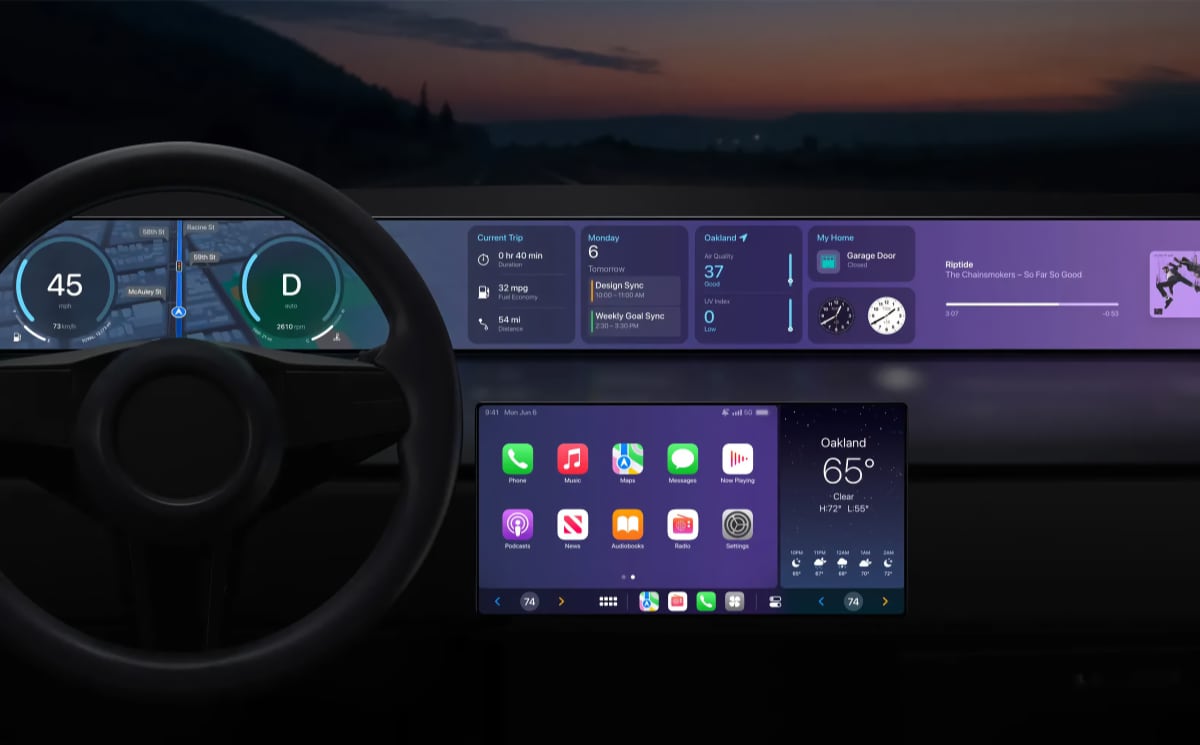VESA is back with yet another certification logo. ClearMR is designed to be a new metric for grading motion blur in both LCD and emissive displays. But can it be trusted?
The response time specification is broken, argues VESA. The organization wants ClearMR to "replace Motion Picture Response Time (MPRT) and other methods of blur characterization" such as G2G.
VESA has a point. Look at the spec sheets of almost any LCD gaming monitor – mistakingly called LED or QLED monitors – and you will typically find a 1 ms response time defined as 'G2G', short for grey-to-grey. The spec is largely meaningless because other grey or color transitions than the one quoted can take, for example, 20 milliseconds or longer to honor. On top of that you can add overdrive trailing (a halo around moving objects) due to overshoot and undershoot in LCD panels. This is why a 1 ms OLED monitor feels – and is – significantly faster.
VESA wants to test and certify displays to ClearMR ranging from 3000 to 9000.
- "The VESA Certified ClearMR logo features multiple performance tiers—from ClearMR 3000 up to ClearMR 9000—where each represents a range of blur performance based on the ratio of clear pixels versus blurry pixels as a percentage. ClearMR 7000, for example, is defined as a CMR range of 65-75 times (6500 to 7500 percent) more clear pixels than blurry pixels. Each tier provides a visually distinguishable change in clarity, with higher CMR numbers indicating higher image quality and less blur. Only displays that pass all ClearMR compliance tests can qualify for the VESA Certified ClearMR logo," explained VESA.
Can ClearMR be trusted?
On the other hand VESA is the organization that gave us the DisplayHDR logo, of which most tiers are completely meaningless and misleadingly promote IPS LCD monitors as capable of producing HDR picture quality.
The first displays certified (check here) for ClearMR are LG's gaming monitors and already we have concerns. Several of LG's IPS LCD monitors (32GQ850, 27GP850 etc.) obtain the same ClearMR 7000 logo as LG's 48GQ900 OLED gaming monitor. This does not reflect reality in our experience.
Also read: VESA's new AdaptiveSync certification takes aim at FreeSync, G-Sync
At launch, VESA is only certifying displays in SDR mode. It is planning to include HDR testing later.
ClearMR: Testing methodology
| In VESA's words:
Products undergoing ClearMR certification are tested using a digital high-speed camera, which takes pictures of a test pattern moving across the screen as it changes from one frame to the next. A luminance measuring device, such as a colorimeter, is used to verify pattern luminance. The pictures are compiled into a profile and analyzed to provide a repeatable and objective CMR value.
Products are tested at ambient room temperature in their default power-up configuration and native-screen resolution at maximum frame rate after a warm-up period. Backlight strobing is disabled during testing in order to establish a level playing field and prevent unfair comparisons with products that do not utilize those blur reduction methods. Limits are also placed on overshoot and undershoot during product testing so that the overall visual performance is not compromised in an effort to reach a specific numerical target.
ClearMR tests work independently of the panel technology in display products, and thus can be used on any display technology, including LCD and OLED, for any display, monitor or product with an embedded display. Display vendors wishing to participate in the VESA Certified ClearMR logo program can send their products for testing at any of VESA’s approved Authorized Test Centers (ATCs).
The ClearMR specification and logo program can be used with high dynamic range (HDR) products; however, the current version of the specification requires products to be tested in standard dynamic range (SDR) mode for certification. VESA is currently working on an update to ClearMR that will enable testing in HDR mode, which will be released in the future. |
FlatpanelsHD








